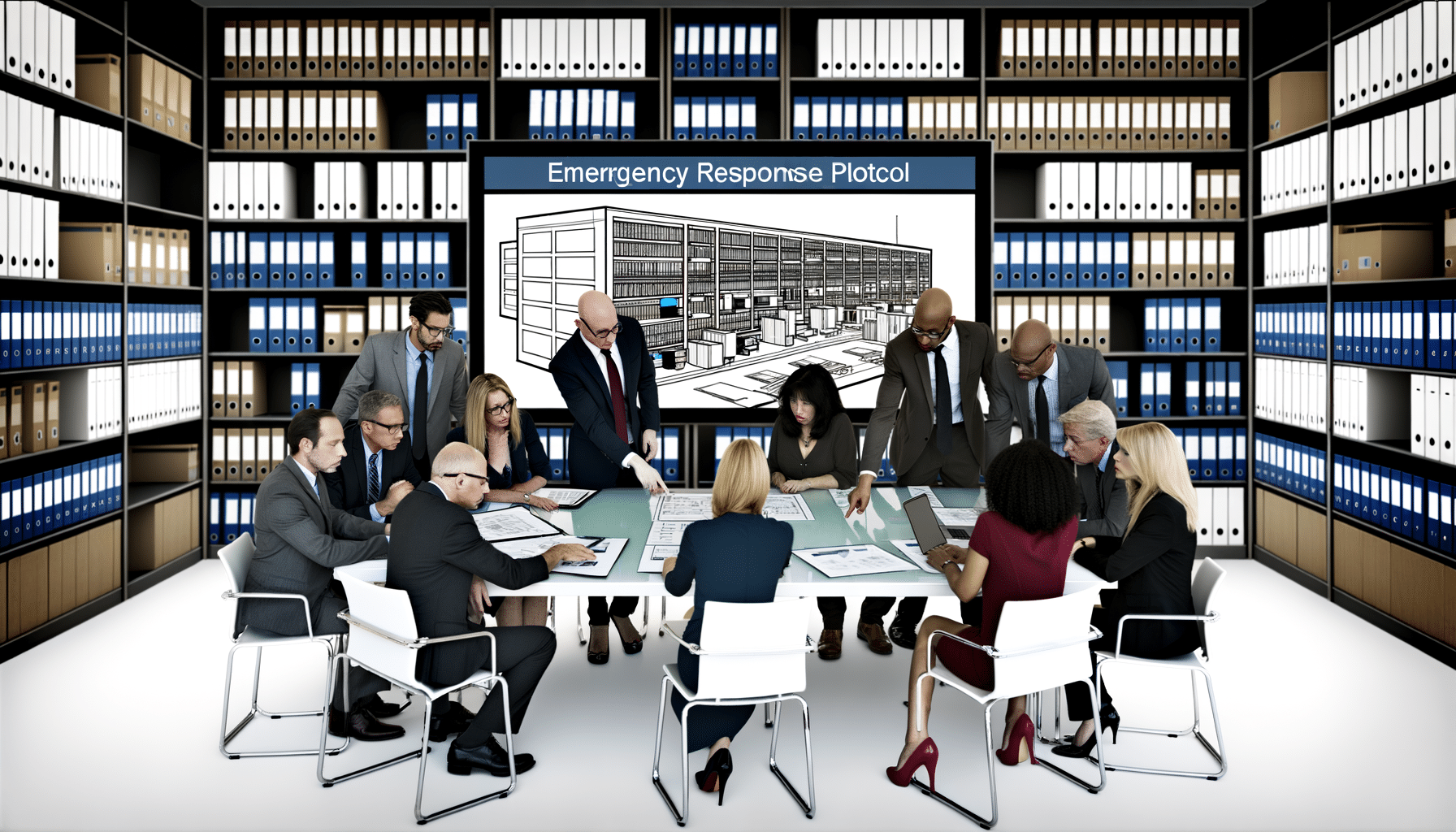- Risk Management
- February 19, 2023
Blockchain-Based Disaster Management Systems

In a world fraught with uncertainties, natural disasters often strike with little warning, demanding swift and decisive action. As someone deeply invested in technology’s potential to solve real-world problems, I find Blockchain to be a game-changer in enhancing the effectiveness of disaster management systems. Today, I’ll delve into how this radical technology can be a linchpin in disaster response by ensuring the reliability of records and aiding strategic decisions.
The Challenge of Disaster Management
When a natural disaster occurs, the initial hours are crucial. Clarity, coordination, and the efficient distribution of resources can be a matter of life and death. However, traditional disaster management systems often falter due to fragmented information, delayed communications, and logistical challenges. Herein lies the relevance of Blockchain — a technology synonymous with transparency, immutability, and security, offering the much-needed solace to these pain points.
Understanding Blockchain’s Role
At its core, Blockchain technology is a decentralized ledger that enables secure and tamper-proof recording of transactions amongst stakeholders. In disaster management, the application of Blockchain can ensure that data from various involved agencies—be it government, NGOs, or private sectors—remains transparent and accessible to all. This holistic viewpoint eliminates the silos of information that otherwise impede real-time responses.
Breaking Down Blockchain’s Advantages in Disaster Management
Blockchain has attributes that address key issues in disaster response:
1. Transparency and Trust
During a disaster, various organizations must work synergistically. Blockchain’s transparency means that all participating entities have access to the same data, reducing the risk of miscommunication and mismanagement. This fosters trust among partners working towards a common goal.
2. Immutable Records
One of Blockchain’s defining traits is immutability; once a piece of information is recorded, it cannot be altered without consensus. For disaster management, this ensures that critical information — whether about emergency supplies, evacuation routes, or shelter capacities—remains accurate and trustworthy.
3. Efficient Resource Allocation
Disaster relief efforts often involve the distribution of substantial resources. Blockchain can streamline this by providing automated smart contracts that disburse resources as certain preconditions are met. This minimizes delays and human error.
4. Reduced Fraud and Corruption
In high-pressure scenarios like disasters, the threat of corruption can looms large. By enabling transparent, traceable transactions, Blockchain can significantly reduce the opportunities for fraudulent activities.
5. Enabling Effective Fund Management
Given its transparent and accountable nature, Blockchain is ideal for managing the vast sums of donations and funds associated with disaster relief. Donors can track their contributions’ impact, and governments can ensure funds are utilized effectively.
Applications of Blockchain in Real-world Disasters
Recent instances underscore Blockchain’s expanding role in disaster response:
- During the 2020 Australian bushfires, Blockchain was explored to track donations, ensuring funds reached the intended beneficiaries efficiently and transparently.
- The 2021 Hurricane Ida prompted explorations into Blockchain-based platforms to streamline insurance claims, cutting down on processing time and ensuring victims received timely compensation.
Poised for the Future
The integration of Blockchain into disaster management is still in its relative nascence but brimming with potential. As these systems become more advanced, I foresee a world where data is not only decentralized but utilized effectively, resulting in informed and timely choices during crises.
Blockchain is not just a technological marvel; it’s a testament to how innovation can be directed at the world’s most pressing issues. As I explore these solutions through my journey with RecordsKeeper.AI, I’m continually reminded of technology’s vast potential to touch lives across the spectrum, from businesses to communities devastated by unforeseen calamities.
Call to Action
Today’s technology is tomorrow’s resource. I invite you to revolutionize disaster response through Blockchain and share these insights with stakeholders in your network. For further information on how Blockchain and innovative record management solutions can redefine operational efficiency and security, stay connected with me and explore more insights at RecordsKeeper.AI.
Toshendra Sharma is the visionary founder and CEO of RecordsKeeper.AI, spearheading the fusion of AI and blockchain to redefine enterprise record management. With a groundbreaking approach to solving complex business challenges, Toshendra combines deep expertise in blockchain and artificial intelligence with an acute understanding of enterprise compliance and security needs.
Related Posts

Quick Tips for Records Emergency Recovery
Handling record recovery after emergencies.
- November 17, 2024

Setting Up a Record Emergency Response Plan
How to prepare for and handle record-related emergencies.
- November 17, 2024
Archives
- December 2024
- November 2024
- October 2024
- September 2024
- August 2024
- July 2024
- June 2024
- May 2024
- April 2024
- March 2024
- February 2024
- January 2024
- December 2023
- November 2023
- October 2023
- September 2023
- August 2023
- July 2023
- June 2023
- May 2023
- April 2023
- March 2023
- February 2023
- January 2023
- December 2022
- November 2022
- October 2022
- September 2022
- March 2019
Want to get more content like this?
Signup to directly get this type of content to your inbox!!
Latest Post
Organizing External Auditor Access
- December 22, 2024
Document Control in Manufacturing Plants
- December 21, 2024
Handling Rush Financial Report Requests
- December 20, 2024
Managing Record Access After Staff Changes
- December 19, 2024





